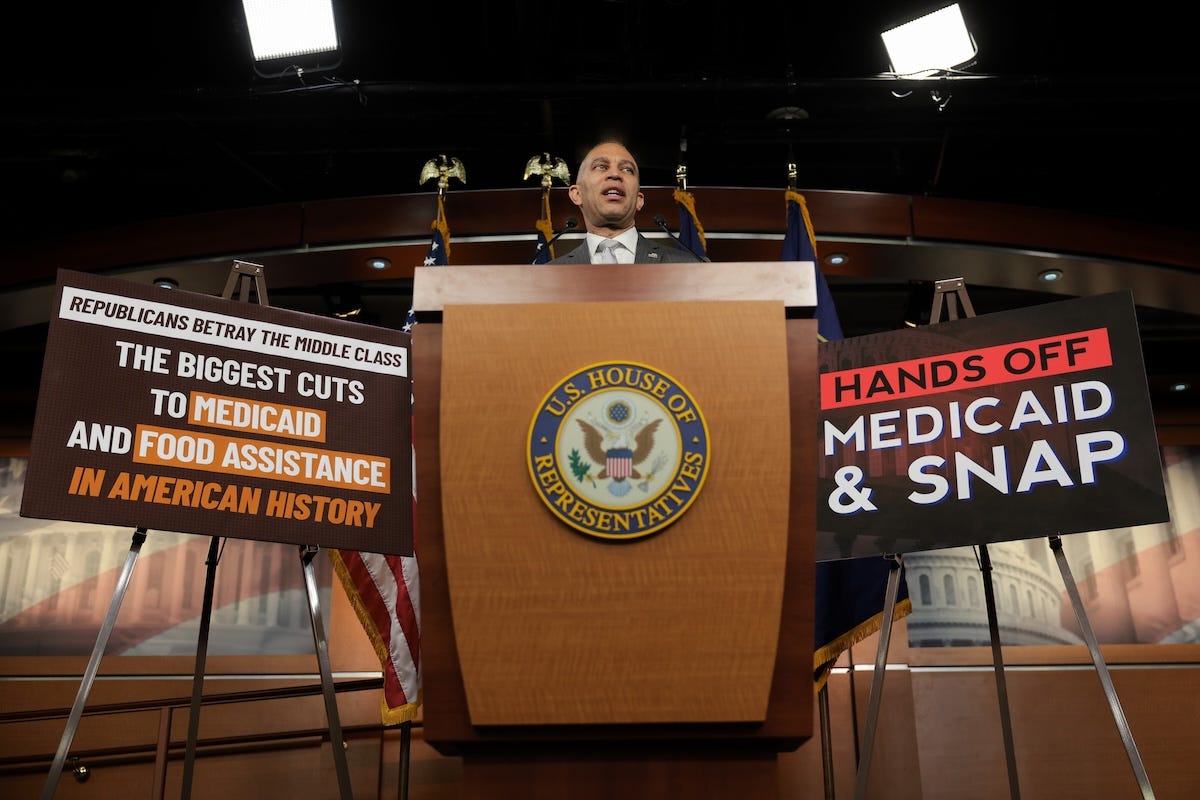Let A Million Anti-Trump Flowers Bloom
Carefully orchestrated rebranding exercises are overrated.
Ask almost any professional Democrat what the party needs to do to become nationally viable and they’ll respond with some version of the same boilerplate internal critique:
We have to be more than just the anti-Trump party.
Voters want to know what we’re for, not just what we’re against.
Democrats need a vision.
If this were true, it would be a big challenge. The fact that so many Democrats believe it to be true is a pretty big problem in its own right. In their certainty that they need to coalesce around some policy agenda or other, they choose a course of infighting for themselves.
You see the tension over policy differences in the way moderate and frontline members define themselves by contrast to members to their left, and vice versa. You see it in the way moderates blame the squad and “wokeness” for Democratic underperformance, and progressive members criticize establishmentarians for ignoring the working class, or being bought and paid for.
And because they are ultimately fighting over the party’s brand, or the way the public perceives the party—fighting for factional control—the underlying policy dissension never gets a real airing. Moderates insist that the party should be “normal” and prove it by promoting “kitchen-table issues,” without almost ever saying what those issues are. Progressives call for big structural reforms, or else they promise a “revolution” rooted in policies that they also insist are not radical.
If all of these Democrats were correct in their conviction—that they need a unifying platform—the infighting would get worse. They’d have to air substantive differences and hash out an agenda that most members and candidates could endorse and campaign on. They pulled this off OK in the hothouse environment of mid-2020, when the country was in crisis and Democrats were desperate to defeat Donald Trump. But that truce has broken down.
Here’s the thing, though: They’re wrong. They can actually do just fine being the party of people who understand that Trump is bad, that his worst deeds have to be undone, and that he and his enablers should be held accountable, some politically, some legally. People who believe that they can freely disagree in good faith1 about policy and govern the country through a mix of consensus and responsiveness to emerging need. “We’re a big tent party of people who disagree in good faith and thus don’t all espouse the same policy views” isn’t the absence of appeal, it’s the appeal itself. Are you one of the 55-60 percent of Americans who now sees Trump clearly, and is repulsed? You have a seat at the table here.
DON’T HAVE A COW, MANUFACTURERS
If you have a minute, take a quick spin through the comments on the Texas Manufacturing Outlook Survey conducted by the Federal Reserve Bank of Dallas.
Here’s a brief sample:
“If this continues for any length of time, many small companies are likely to be significantly hurt or even gone. If we want to bring manufacturing back to the U.S., can we try not to kill the companies that can actually help do that before we get the chance?”
“Tariffs and tariff uncertainty are wreaking havoc on our supply lines and capital spending plans.”
“Tariffs. Tariffs. Tariffs. There was a better way to do this.”
“The administration’s tariff policy is insanity. It is creating havoc in the manufacturing business.”
“Sales are down, and uncertainty is very high. We import raw materials and finished goods and are very nervous about tariff impacts (especially China). We will likely need to increase prices, which will likely hurt demand/sales. We are expecting to get hit on both the supply and demand side. There is a lot of uncertainty.”
Now ask yourself the following questions:


